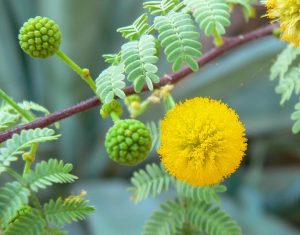Many of the normal daily activities of honey bees can resemble multiple different intentions on the part of the bees.
Take, for example, the case of a Tucson-area rental property. Unbeknownst to the owner, bees moved into the eaves, entering via a screened-off vent hole that had been compromised by the pecking of a Gila Woodpecker. The tenant killed off the bees, presumably by squirting some type of insecticide into the cavity. By leaving nearly a hundred pounds of honey, dead bees, biologically active pollen and other materials in the house above the ceiling, the tenants set the property up for an almost impossible-to-counteract nest of cricket, cockroaches and other critters.
After the tenants were replaced by others, the out-of-town landlord became aware that bees were paying a lot of attention to the eaves of the house. What the tenants reported to the landlord was that bees were seen flying to and from the eaves over a large portion of the side of the house.
With permission from the landlord, American Bee Control had a phone conversation with the tenant. Based on the description of the bees’ behavior, it became obvious that the bees were interested in gaining access to “unprotected honey” (to use a term that bees would, if they spoke English.) Because the area was sealed off to entry by neighborhood bees, the persisted in flying around, hoping to gain access. This was in the winter time, when it would not be expected that they would be househunting, at least not in large numbers. ABC’s expertise in analyzing bee behavior led to the conclusion that, due to rainy weather and high humidity, the honey that was now pooled on the top of the ceiling was hygroscopically absorbing moisture from the humid air. The newly-liquified honey was detected by neighborhood beehives at a time when natural foliage offered almost no source of nectar. The persistent probing of the eaves of the house closely resembled the activity of “scout bees” seeking a future home for their homeless colony. By understanding bee behavior, ABC was able to assure the tenant and the landlord regarding what was, and wasn’t appropriate type of service for the property.
We welcome all your questions regarding what bees are doing at your property. We will give you our best advice regardless of whether it involves our services or other offerings that are more congruent with your particular situation. Please don’t hesitate to call or email. If we can’t take your call at the moment, we will gladly call you back soon. Please be prepared to give a description of what activity the bees are doing, such as “coming and going” or “walking around on the top of the wall,” or “flying around, and occasionally landing.” For some information regarding how to characterize bee behavior in advance of calling ABC, please see our YouTube Video “5 Ways to Tell if Bees Have Moved in.”



